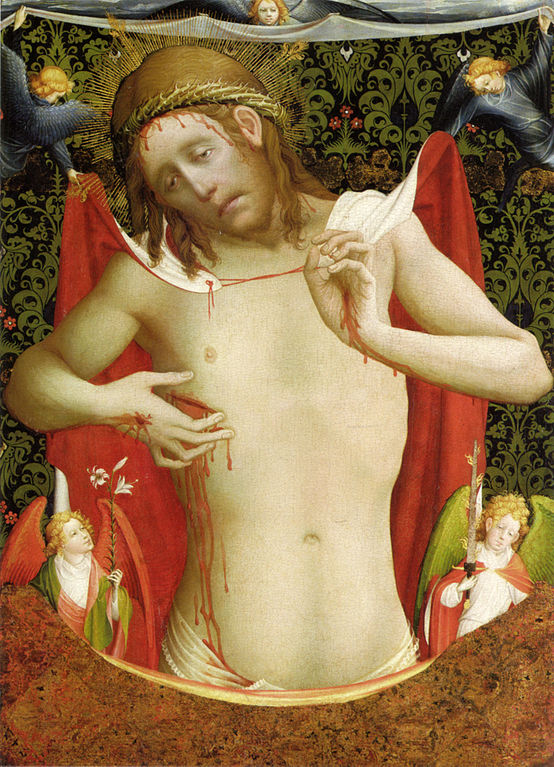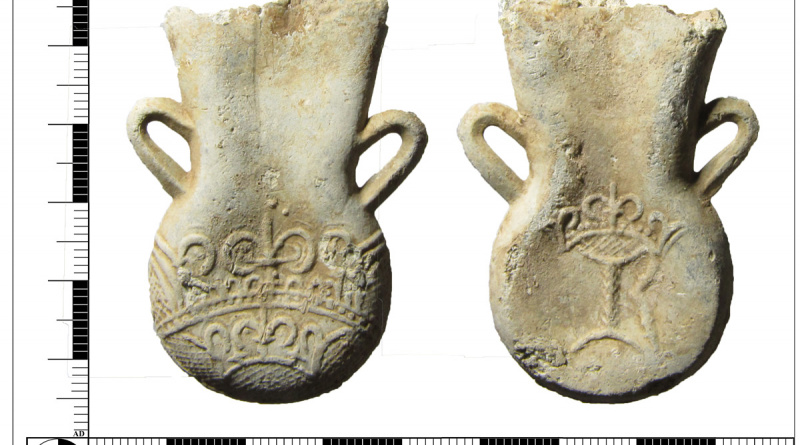PAS Finds: week ended 19 August 2022
PAS Finds: week ended 19 August 2022
My selection of the detecting finds recorded at the PAS in the week ended 19 August 2022.
Featured Find
Pilgrim badge of Christ weeping
A lead pilgrim badge dating to AD 1300 – 1500. It’s a bearded man with four vertical lines beneath each eye and most likely depicts Christ weeping. There are about a dozen similar badges on the PAS database. This is a very well preserved example and has been designated a Find of Note of County Importance.
The PAS record suggests three possible interpretations: Christ as the Man of Sorrows, a badge from the abbey of the Trinity at Vendôme or a connection with the Rood of Grace at Boxley Abbey, Kent.
Christ as the Man of Sorrows

The image of Christ as the Man of Sorrows is from the final period of his life leading up to the Crucifixion. Christ is usually shown with wounds, naked above the waist and with a thorn of crowns. None of the various forms of this badge on the PAS database have a thorn of crowns.
If the badge is a depiction of the Man of Sorrows then it could well be a generic badge, available in several locations. This could explain the wide geographic spread of the found examples.
Trinity at Vendôme
The Trinity Abbey at Vendôme, in northwest France, was a Benedictine monastery founded in 1035. In 1040, Geoffrey II, called Martel (the Hammer”), Count of Vendome, was given a relic of the Holy Tear of Christ1. According to the Bible, the tear was shed by Christ when mourning the death of his friend Lazarus. The tear was enshrined at the Abbey and enjoyed a strong following in the medieval period, attracting pilgrims from all over Europe.
At least seven other French churches claimed to have a sacred tear of Christ.2
Rood of Grace at Boxley Abbey
The abbey of Boxley was founded in the 1140’s and survived until the 1530s. Its claim to fame was the Rood of Grace which was carved wooden image of Christ. The only account of the history of the Rood is from 1576 by an English antiquarian William Lambarde. He claims to have taken it from a advertising pamphlet printed for the monks of Boxley.
The story goes that an English carpenter made the wooden cross while being held captive in France. He returned to England with the cross on the back of a horse. Stopping at an alehouse for refreshments, the horse made its own way to the abbey, where it refused to move from a particular spot. The monks deemed this to be a miracle and the cross was mounted in that spot.
The Rood was reportedly able to move its limbs and head and make various facial expressions. It was also able to foam at the mouth and shed tears. According to a contemporaneous account by a Jeffray Chamber, when the Rood was taken down in 1538 some bits of machinery were found at the back of it. The current abbot and monks “doo declare themselff to be ignorante of that” and Chamber described the workings as “old wire, old rotten sticks“. After some restoration work the Rood was brought back into working order. At a public display soon after its tricks were described as being few and unspectacular.3
The monks of Boxley Abbey certainly exploited the Rood for income, even receiving donations from Henry VIII and his mother.

Image: Museum of London, CC By SA2.0
There are pilgrim badges, such as LON-CCE076, which would have been of the whole rood. This example shows Christ with tears.
Boxley Abbey was a stop on a pilgrimage to Canterbury and pilgrims doing both would probably only want a cheap souvenir, to save their money for Canterbury.
There is a clear link between Christ weeping in the Rood of Grace and the Man of Sorrow.
References
- Capturing Christ’s Tears: La Sainte Larme in Medieval and Early Modern France by Helen M. Hickey, 2018
- Art and Architecture of Late Medieval Pilgrimage in Northern Europe and the British Isles, Chapter 17 by Katja Boertjes, 2004
- The Rood of Grace by Colin Flight.





